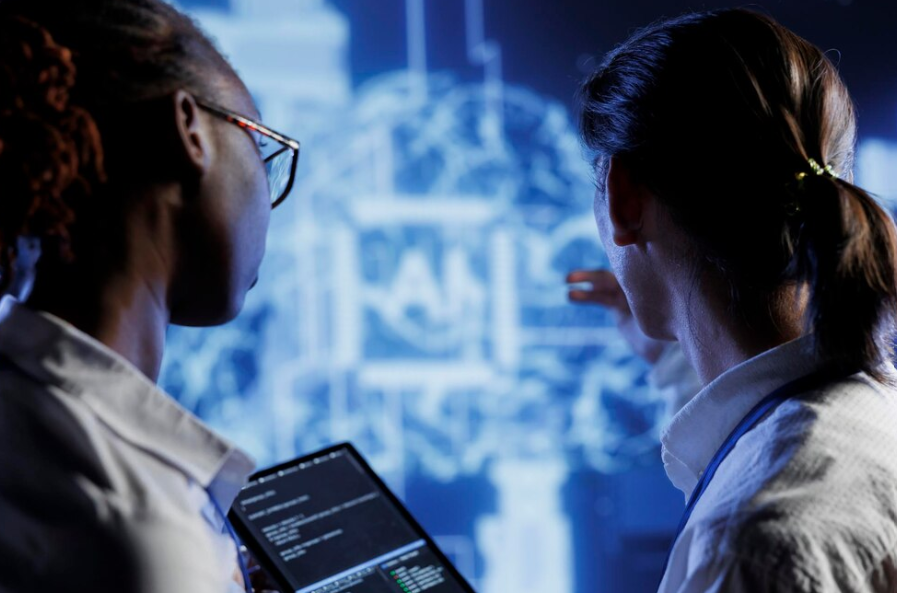The transcription industry is experiencing a significant transformation driven by advancements in artificial intelligence (AI) and machine learning (ML). These technologies are revolutionizing the way transcription is conducted, enhancing efficiency, accuracy, and accessibility. This article explores the various aspects of how AI and ML are reshaping the transcription landscape.

1. Introduction to AI and Machine Learning in Transcription
Transcription involves converting spoken language into written text. Traditionally, this was a labor-intensive process requiring human transcribers to listen to audio recordings and manually type out the content. However, with the advent of AI and ML, this process has become more automated and efficient.
AI and ML algorithms can process large volumes of audio data quickly and accurately. These technologies learn from patterns in the data, improving their performance over time. As a result, AI-driven transcription tools can now handle complex audio files, including those with multiple speakers, background noise, and different accents.
2. Key Technologies in AI and Machine Learning for Transcription
Several AI and ML technologies are at the forefront of transforming transcription services:
- Automatic Speech Recognition (ASR): ASR technology converts spoken words into text in real-time. It uses neural networks to recognize and process speech patterns, making it highly accurate and efficient.
- Natural Language Processing (NLP): NLP enables machines to understand and interpret human language. In transcription, NLP helps in understanding context, identifying speaker turns, and punctuating text correctly.
- Deep Learning: Deep learning algorithms, particularly recurrent neural networks (RNNs) and convolutional neural networks (CNNs), enhance the ability of transcription systems to recognize speech with high accuracy. These algorithms can handle nuances in language, such as slang, idioms, and regional dialects.
3. Benefits of AI and Machine Learning in Transcription
The integration of AI and ML in transcription offers numerous benefits:
- Increased Accuracy: AI-powered transcription tools can achieve higher accuracy rates than human transcribers, especially in challenging audio conditions.
- Speed and Efficiency: These technologies can process audio data much faster than humans, reducing turnaround times significantly.
- Cost-Effectiveness: Automating transcription reduces the need for human transcribers, lowering operational costs.
- Scalability: AI-driven transcription systems can handle large volumes of data, making them ideal for businesses with extensive transcription needs.
- Multilingual Support: AI and ML can support multiple languages, enabling businesses to transcribe audio in different languages without the need for specialized human transcribers.
4. Challenges in AI and Machine Learning Transcription
Despite the advantages, there are several challenges associated with AI and ML in transcription:
- Accuracy in Noisy Environments: Background noise and poor audio quality can still pose challenges for AI transcription systems.
- Accents and Dialects: While AI can handle many accents and dialects, extreme variations can still affect accuracy.
- Context Understanding: AI struggles with understanding context in certain scenarios, which can lead to misinterpretation of speech.
- Data Privacy: Transcribing sensitive information raises concerns about data privacy and security. Ensuring that AI systems comply with data protection regulations is crucial.
5. Future Trends in AI and Machine Learning Transcription
The future of transcription technology looks promising, with several trends expected to shape the industry:
- Improved Contextual Understanding: Advances in NLP will enable AI systems to better understand context, leading to more accurate transcriptions.
- Real-Time Transcription: Enhanced processing power will allow for more real-time transcription capabilities, beneficial for live events and meetings.
- Integration with Other Technologies: Transcription tools will increasingly integrate with other AI-driven technologies, such as voice assistants and virtual meeting platforms, to provide seamless user experiences.
- Personalization: AI systems will offer more personalized transcription services, adapting to individual user preferences and speech patterns.
- Ethical AI: Ensuring ethical use of AI in transcription, including data privacy and bias mitigation, will be a critical focus area.
6. Applications of AI and Machine Learning in Various Industries
AI and ML transcription technologies have wide-ranging applications across various industries:
- Healthcare: Transcription of medical records, doctor-patient consultations, and medical research interviews.
- Legal: Transcription of court proceedings, depositions, and legal documentation.
- Media and Entertainment: Transcription of interviews, podcasts, and video content for accessibility and content creation.
- Education: Transcription of lectures, seminars, and research interviews for academic purposes.
- Business: Transcription of meetings, conferences, and customer service interactions for record-keeping and analysis.
Conclusion
AI and machine learning are revolutionizing the transcription industry, making it faster, more accurate, and cost-effective. As these technologies continue to evolve, they will address current challenges and unlock new opportunities for various sectors. Embracing these advancements will be crucial for businesses and organizations looking to leverage the full potential of transcription services.
